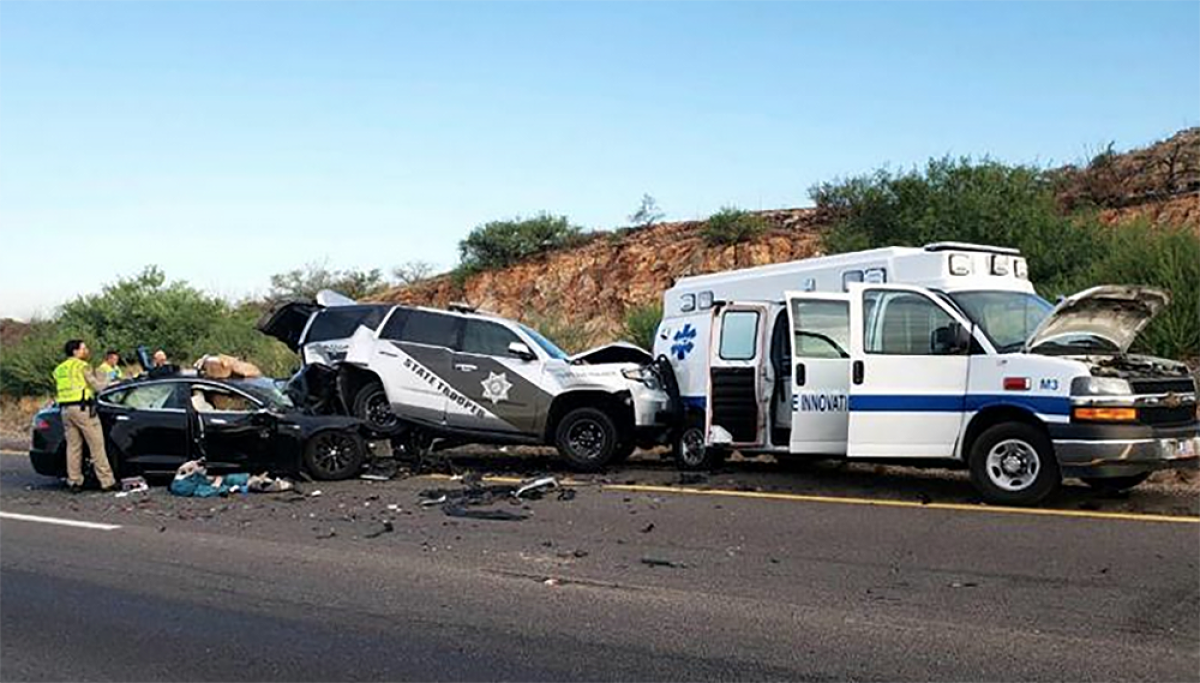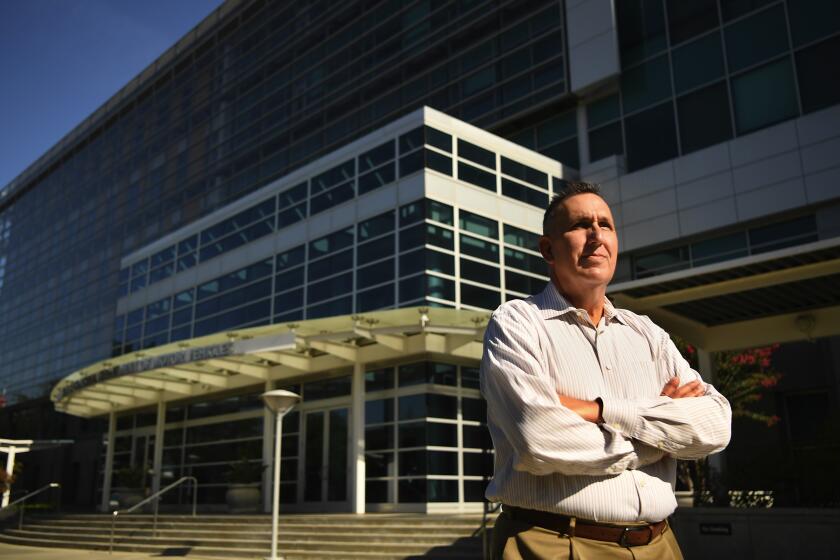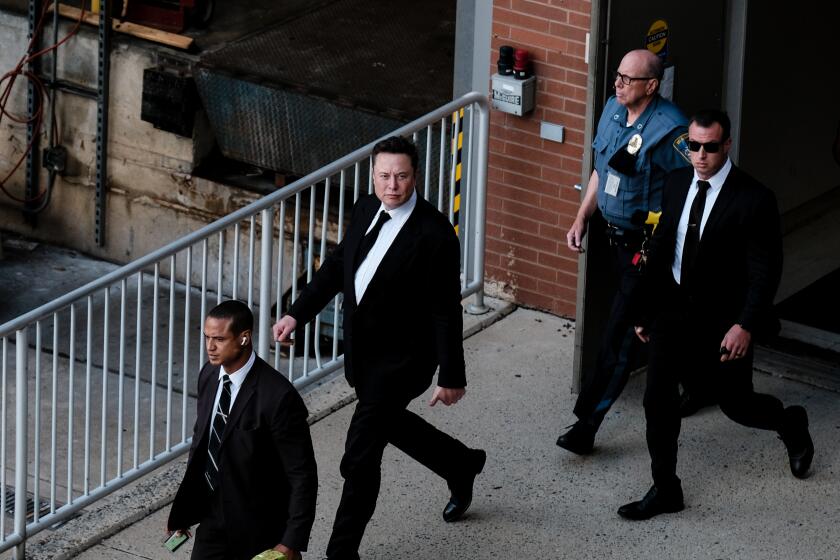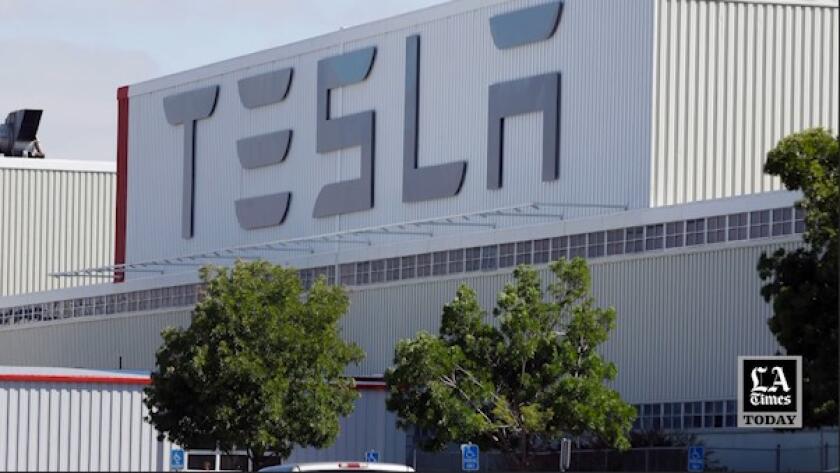Most driver-assist crashes involved Teslas, new data show. But questions abound

How safe are automated driving systems? Are some safer than others?
Seven years after Tesla began selling cars equipped with what it calls Autopilot, auto safety regulators are still unable to answer these basic and vital questions.
But they took a step toward being able to do so Wednesday with the National Highway Traffic Safety Administrationâs first report on crashes involving advanced driver assistance systems.
The numbers are suggestive, with Tesla accounting for 70% of all crashes involving âLevel 2â driving systems, which include adaptive cruise control plus automated lane-keeping and can encompass more advanced features, such as automatic lane changing. That figure is sure to provide ammunition for critics who say Elon Muskâs company has taken a reckless approach to rolling out unproven technology.
But far more detail and context are required before regulators can say definitively whether such systems can outperform human drivers, or one another.
âThe data may raise more questions than they answer,â NHTSA head Steven Cliff told reporters.
In June 2021, the agency required carmakers to report serious crashes involving Level 2 systems. The numbers reported Wednesday reflect crashes that have occurred from that time through May 15 of this year.
Of all the crashes that occurred over that period involving all cars, automakers reported that 392 involved automated driver assist systems.
Of those, 273 were reported by Tesla, 90 by Honda and 10 by Subaru; others reported serious crashes in single digits.
âThese data provide limited insight into hundreds of crashes,â said Bryant Walker Smith, a professor who specializes in automated-vehicle law at the University of South Carolina School of Law. âBut in the same period there were literally millions of other crashes.â
But no one should conclude that Level 2 systems are safer than cars operated by human drivers alone, he said. They might be, they might not. The NHTSA data are far too broad to reach any such conclusions, he said.
Why doesnât the DMV have anything to say about its investigation of Teslaâs autonomous driving claims after a full year? The agency isnât talking, and lawmakers are getting impatient.
The data donât include the number of automated systems that each company has on the road or the total vehicle miles traveled with Level 2 systems engaged. NHTSA had no comment on how thorough each companyâs reporting procedures might be. The agency plans monthly reports.
Crashes that were prevented by automated systems âare obviously unreported to the extent that they did not occur,â Smith said. A deep look into the cause of reported crashes â the roles played by the system, by the driver, by the systemâs driver monitoring system, and other conditions on the roadway â would help safety regulators reach firm conclusions, he said.
âWhat NHTSA provided was a âfruit bowlâ of data with a lot of caveats, making it difficult for the public and experts alike to understand what is being reported,â Jennifer Homendy, chair of the National Transportation Safety Board, said in a statement. âIndependent analysis of the data is key to identifying any safety gaps and potential remedies.â
Last yearâs crash-data reporting order marked NHTSAâs first attempt to fill a deep deficit in knowledge about the real-life safety implications of automated vehicle technology on public roads.
Any vehicle makerâs automated system could be safer than human drivers. Or less safe. Data rich enough to reach sound conclusions are scant. Crash data collection systems in the U.S. are decades old, inconsistent, still paper-based at many police departments and utterly unequipped to determine the role automated systems play in preventing or causing crashes.
âOne would have hoped that NHTSA would âdo the workâ to make the numbers they publish in summaries really be comparable,â Alain Kornhauser, head of the driverless car program at Princeton University, said in an email.
Apart from collecting crash data, NHTSA is investigating why Teslaâs cars have been crashing into emergency vehicles parked by the roadside, often with their emergency lights flashing.
The top federal traffic safety regulator says Teslaâs partially automated driving system, Autopilot, failed to spot parked police cars and fire trucks. It wants to know why.
The investigation was prompted by 11 crashes that led to 17 injuries and one death, including three crashes in Southern California. The number of such crashes has increased to 16. The technology in about 830,000 cars â all Tesla vehicles sold in the U.S. from 2014 to 2022 â is under investigation.
As part of that investigation, regulators will be looking into the performance of Teslaâs automatic emergency braking systems. As The Times reported last year, Tesla drivers report emergency braking problems at a rate far higher than drivers of other makes.
The emergency vehicle investigation grew more serious earlier this month, when NHTSA lifted its status to âEA,â for engineering analysis. That category means investigators will be taking a closer look at the technical design and performance of Autopilot. Once an investigation reaches EA, a recall is more likely.
Meanwhile, the California Department of Motor Vehicles continues to investigate whether Tesla is falsely marketing its Full Self-Driving feature, a $12,000 option. Experts in the field overwhelmingly note that the system doesnât come close to being able to safely drive itself.
The DMV review, however, is more than a year old, and the DMV wonât say when it might be completed.
State legislators are increasingly concerned about the DMVâs seemingly lax approach to Tesla. In December, the chair of the California Senate Transportation Committee, Lena Gonzalez, asked the DMV to provide crash and safety information to the committee. The DMV said it would look into it, and is still looking.
The DMV appears to be allowing Tesla to test self-driving cars on public highways without requiring the company to report crashes or system failures, as is required of competitors such as Waymo, Cruise, Argo and Zoox. DMV head Steve Gordon has declined all media requests to discuss the subject since May 2021.
Watch L.A. Times Today at 7 p.m. on Spectrum News 1 on Channel 1 or live stream on the Spectrum News App. Palos Verdes Peninsula and Orange County viewers can watch on Cox Systems on channel 99.
More to Read
Inside the business of entertainment
The Wide Shot brings you news, analysis and insights on everything from streaming wars to production â and what it all means for the future.
You may occasionally receive promotional content from the Los Angeles Times.














